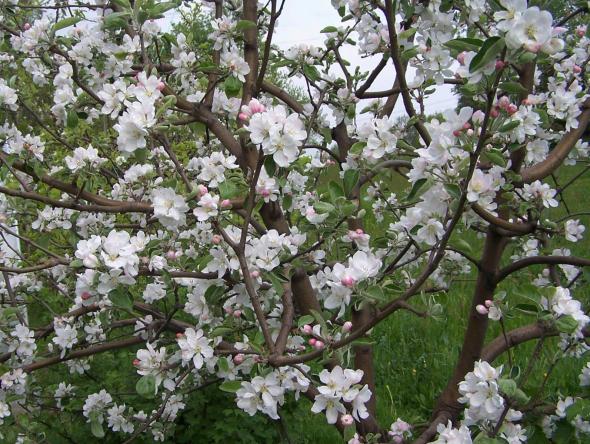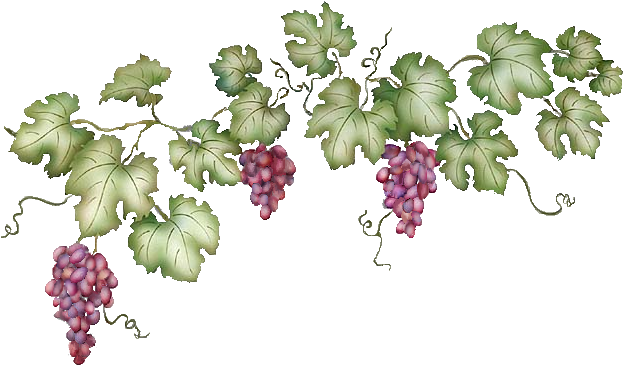Apple Trees ~ Malus Domestica Plant Care Guide
SOURCE
The apple is the pomaceous fruit of the apple tree, species Malus domestica in the rose family (Rosaceae). It is one of the most widely cultivated tree fruits, and the most widely known of the many members of genus Malus that are used by humans. Apples grow on small, deciduous trees. The tree originated in Central Asia, where its wild ancestor, Malus sieversii, is still found today. Apples have been grown for thousands of years in Asia and Europe, and were brought to North America by European colonists. Apples have been present in the mythology and religions of many cultures, including Norse, Greek and Christian traditions. In 2010, the fruit’s genome was decoded, leading to new understandings of disease control and selective breeding in apple production.
There are more than 7,500 known cultivars of apples, resulting in a range of desired characteristics. Different cultivars are bred for various tastes and uses, including cooking, fresh eating and cider production. Domestic apples are generally propagated by grafting, although wild apples grow readily from seed. Trees are prone to a number of fungal, bacterial and pest problems, which can be controlled by a number of organic and non-organic means.
About 69 million tonnes of apples were grown worldwide in 2010, and China produced almost half of this total. The United States is the second-leading producer, with more than 6% of world production. Turkey is third, followed by Italy, India and Poland. Apples are often eaten raw, but can also be found in many prepared foods (especially desserts) and drinks. Many beneficial health effects are thought to result from eating apples; however, two forms of allergies are seen to various proteins found in the fruit.
********************
Malus domestica @ Old farmer’s
Plant type: Fruit
USDA Hardiness Zones: 3, 4, 5, 6, 7, 8
Sun exposure: Full Sun
Soil type: Loamy
Soil pH: Neutral
Ever wish you could have an apple orchard in your backyard? You can—in the space of a single tree—if you plant a hedge of dwarf apple trees or an apple espalier.
To get started, let’s talk about selection criteria first:
- Look for disease-resistant trees that give you the ability to grow organic fruit or to use fewer chemicals. Maintenance is easier, too.
- You need to choose a rootstock. All apple trees sold have 2 parts: a “rootstock” or foundation and a “scion” or top portion which determines the fruit variety. A rootstock can be a seeding (which produces a full-size tree) or it can be “dwarfing” or “size-controlling” (which produces a smaller tree for easier care and harvest).
- For dwarf trees, make sure that the rootstock is specified. A Bud 9 is a common, hardy tree that’s easy to train for USDA Climate Zones 3 to 5. The M9 is probably the most widely planted rootstock, though it would die in frigid winters.
- Buy dormant, bare-root, 1-year-old nursery trees with good root systems. Dwarfs and semidwarfs will bear in 3 to 4 years, yielding 1 to 2 bushels per year. Standard-size trees will bear in 5 to 8 years, yielding 4 to 5 bushels of apples per year.
- The variety of apple selected should be based on fruit characteristics, bloom time and pollen compatibility. Consult a local nursery to see which trees are potential cross-pollinators in your area. For best results, include a ‘Grimes Golden’, ‘Golden Delicious’, ‘Red Delicious’, or ‘Winter Banana’ in your planting. These varieties are known pollinators. Crabapple trees can also be used as pollinizers if they bloom at the same time as the desired variety. Nursery catalogs will provide pollination charts.
- Most apple varieties do not pollinate themselves or any flowers of the same apple vareity; this requires planting at least two different apple tree varieties close to one another so that the bees can pollinate. (There are actually some self-pollinating apple tree varieties if you are really short on space. See list of self-fertile apples. However, even these apple trees will bear more fruit if cross-pollinated.)
Planting
- Spring planting is recommended in central and northern areas. Where fall and winter weather is generally mild and moist, fall planting is successful.
Climate Considerations
- Not every apple grows everywhere. Each variety has a specific number of days needed for fruit maturity.
- Tree tags don’t always tell you where the variety grows best, but many catalogs do. Also, check with your county extension agent for a specific recommendation for your area.
- As a general rule, if a tree is termed hardy, it grows best in Zones 3 to 5. If termed long-season, apple quality will be best in Zones 5 to 8. Check your zone here.
- Each variety has a number of chill hours needed to set fruit (i.e., the amount of time temperatures are between 32 and 45 degrees F). The farther north you go, the more chill hours an apple variety needs to avoid late spring freeze problems. Check tree tags for chill hour information or ask the seller.
Site and Soil
- Take a soil test prior to planting your apple trees. Your local County Extension Center can instruct you in collecting the soil sample, help you interpret the results, and provide valuable information about the soil in your county. Results from the soil test will determine the soil amendments necessary to correct nutrient deficiencies and adjust soil pH. The amendments should be worked into the soil to a depth of 12 to 18 inches where the tree will root, not just the planting hole.
- Apple trees need well-drained soil, not too wet. Soil needs to be moderately rich and retain moisture as well as air; mulch with straw, hay, or some other organic material to keep soil moist and provide nutrients as they decompose.
- Choose a sunny site. For best fruiting, an apple tree needs “full sunlight,” which means six or more hours of direct summer sun daily. The best exposure for apples is a north- or east-facing slope.
- Tree spacing is influenced by the rootstock, soil fertility, and pruning. A seedling or full-size tree should be planted about 15 to 18 feet in a row. A dwarfing rootstock might be 4 to 8 feet in a row.
- Dwarf apple trees are notoriously prone to uprooting under the weight of a heavy crop, so you should provide a support system for your hedge. You can grow your trees against a fence, or you can provide free-standing support in the form of a trellis.
- Make sure the tree will not be planted in a “frost pocket” where cold air settles in low-lying areas. Choose a higher site with a slip if possible so that cold air will flow away from the trees.
- Do not plant trees near wooded areas or trees.
Planting the Tree in the Ground
- Before planting, remove all weeds and the grass in a 4-foot diameter circle.
- After you purchase the tree, protect it from injury, drying out, freezing, or overheating. If the roots have dried out, soak them in water about 24 hours before planting.
- Dig a hole approximately twice the diameter of the root system and 2 feet deep. Place some of the loose soil back into the hole and loosen the soil on the walls of the planting hole so the roots can easily penetrate the soil. Spread the tree roots on the loose soil, making sure they are not twisted or crowded in the hole. Continue to replace soil around the roots. As you begin to cover the roots, firm the soil to be sure it surrounds the roots and to remove air pockets.
- Do not add fertilizer at planting time as the roots can be “burned”. Fill the remainder of the hole with the loose soil, and press the soil down well.
- The graft union must be at least 2 inches above the soil line so that roots do not emerge from the scion. When you have finished planting the tree, water well to eliminate air pockets and provide good contact between the roots and the soil.
Care
Minimize Pruning of a Young Tree
Pruning slows a young tree’s overall growth and can delay fruiting, so don’t be in a hurry to prune, other than removing misplaced, broken, or dead branches. There are several techniques to direct growth without heavy pruning. For example:
- Rub off misplaced buds before they grow into misplaced branches.
- Bend a stem down almost horizontally for a few weeks to slow growth and promote branches and fruiting. Tie down with strings to stakes in the ground or to lower branches.
Prune a Mature Tree Annually
Once an apple tree has filled in and is bearing fruit, it requires regular, moderate pruning.
- Prune your mature tree when it is dormant. Completely cut away overly vigorous, upright stems (most common high up in the tree).
- Remove weak twigs (which often hang from the undersides of limbs.
- Shorten stems that become too droopy, especially those low in the tree.
- After about ten years, fruiting spurs (stubby branches that elongate only about a half-inch per year) become overcrowded and decrepit. Cut away some of them and shorten others.
- When a whole limb of fruiting spurs declines with age, cut it back to make room for a younger replacement.
Thin Ruthlessly
- Thin or remove excess fruit. This seems hard but this practice evens out production, prevents a heavy crop from breaking limbs, and ensures better-tasting, larger fruit crop.
- Soon after fruit-set, remove the smallest fruits or damaged ones,leaving four inches between those that remain.
Pests
Apples are prone to pests. Here are some pointers:
- Keep deer at bay with repellents or fencing; deter mice and rabbits with wire-mesh cylinders around the base of the tree.
- Sprays may be needed for insects, although one of the worst culprits, the apple maggot, can be trapped simply enough by hanging one or two round, softball-size balls, painted red and coated with sticky “Tangle-Trap,” from a branch in June through the summer. Reapply the sticky goo a time or two, as necessary.
- Fend off diseases by raking apple leaves, burying them beneath mulch, or grinding them with a lawn mower at season’s end.
- Pruning reduces disease by letting in more light and air.
Harvest/Storage
Harvest Patiently. After all this pruning and caring, be sure to harvest your apples at their peak of perfection.
- Pluck your apples when their background color is no longer green.
- Different apple varieties mature at different times, so the harvest season can stretch from August to October.
- At this point, the stem should part readily from the branch when the fruit is cupped in the palm of your hand and given a slight twist around, then up.
- If the apple is overripe and soft, use for cooking!
- Apples keep well for about six months at temperatures between 32 and 45 degrees F.
“Baked apples have an excellent effect upon the whole physical system, feeding the brain as well as adding to the flesh, and keeping the blood pure; also preventing constipation and correcting a tendency to acidity, which produces rheumatism and neuralgia.” –A Tip from The 1898 Old Farmer’s Almanac
Recommended Varieties
Beyond climate considerations, how will you use your apples? Do you love to bake apple pies? Or, perhaps you just want apples that taste far better than what you could buy in a grocery store.
- A young dwarf tree produces about 1 1/2 bushels of fruit—and even less when the tree is part of an apple hedge. So, if you’re interested in baking lots of ‘Cox’s Orange Pippin’ apple pies, you’ll need to plant several trees of that variety to get enough fruit.
- If you have no particular culinary goal, try planting one each of different varieties that ripen over the entire harvest season. Then you can enjoy regular apple tastings and still have enough fruit on hand for a “mess” of cooked apples.
- Plant disease-resistant apple varieties such as ‘Liberty’, ‘Jonafree’, ‘Macfree’, and ‘Williams Pride’.
- Seek out the advice of local orchardists about the varieties that will do well in your area. Do the bulk of your planning from an easy chair, with a half-dozen nursery catalogs in your lap!
Recipes
Cooking Notes
See our table on the best baking and cooking apples in North America.
Wit & Wisdom
- March 11 is Johnny Appleseed Day, celebrating John Chapman, legendary American pioneer and folk hero who planted apple trees across the American Frontier.
- Did you know that apples and aged cheeses can reduce tooth plaque? (Eat them together!)
- A bad woman can’t make good applesauce.–proverb
****************

See Also ….
Growing Trees from Seed: A Practical Guide to Growing Native Trees, Vines, and Shrubs








Do you have an orchard? I didn’t know apples were roses. I always thought blackberries were, though.
July 5, 2013 at 3:25 am
no i wish i had orchard here. i do the u pick here, but i am considering growing apple tree. apples are outrageous expensive, even u picks are high. think last year was about 40 usd for bushel, forget that. you can find abandoned apple trees but they don’t produce too well without care, maybe i could snag one.
i didn’t know they were in rose family either, blackberries are yes
July 5, 2013 at 3:31 am
Go on the hills and pull few runners from WILD GREEN APPLES ..Now you have the best apple tree on the street. The best and only best. 😉
July 5, 2013 at 3:57 am
thank you, kind of along the lines of what i was thinking 😉 … so many abandoned homes and gardens
July 5, 2013 at 10:40 am
Old cemeteries also GOOD HUNTING FOR WILD TREES ??? LOL
July 5, 2013 at 11:40 am
good idea, love old cemeteries, good stuff 🙂
July 5, 2013 at 11:44 am
WHOLE YOUR ” Carina’s ” Dogma’s politics page/s have been HIJACKED and has virus …Seriously
July 5, 2013 at 11:48 am
which one the group or piazza or both?
July 5, 2013 at 12:03 pm
Only piazza
July 5, 2013 at 12:05 pm
ok it is more than likely jpg i posted from url, how long since i have to hunt for it now … i hate this shit, i wish it alerted me and could find it as soon it was posted stupid macafee
July 5, 2013 at 12:08 pm
No worries… 😀 …I heard McCafee is hunted for tax fraud ?
July 5, 2013 at 12:11 pm
good, i have no idea what jpg, it could even be in comments. grrr i hate searching for this, it should tell me with real time scanning, ma non 😦
July 5, 2013 at 12:13 pm
am going to move some stuff around and delete some jpgs let me know when it stops alerting you, might take while
July 5, 2013 at 12:15 pm
Laughing at ” A bad woman can’t make good applesauce. ” –proverb
LOL 😀
July 5, 2013 at 12:17 pm
lol 😛
July 5, 2013 at 12:22 pm
Pingback: Organic apples make the perfect health food | Auntie Dogma's Garden Spot
Thank you from the University of Zimbabwe..Crop Science R143292H student id
October 10, 2015 at 9:34 am
thank you
October 10, 2015 at 10:32 am